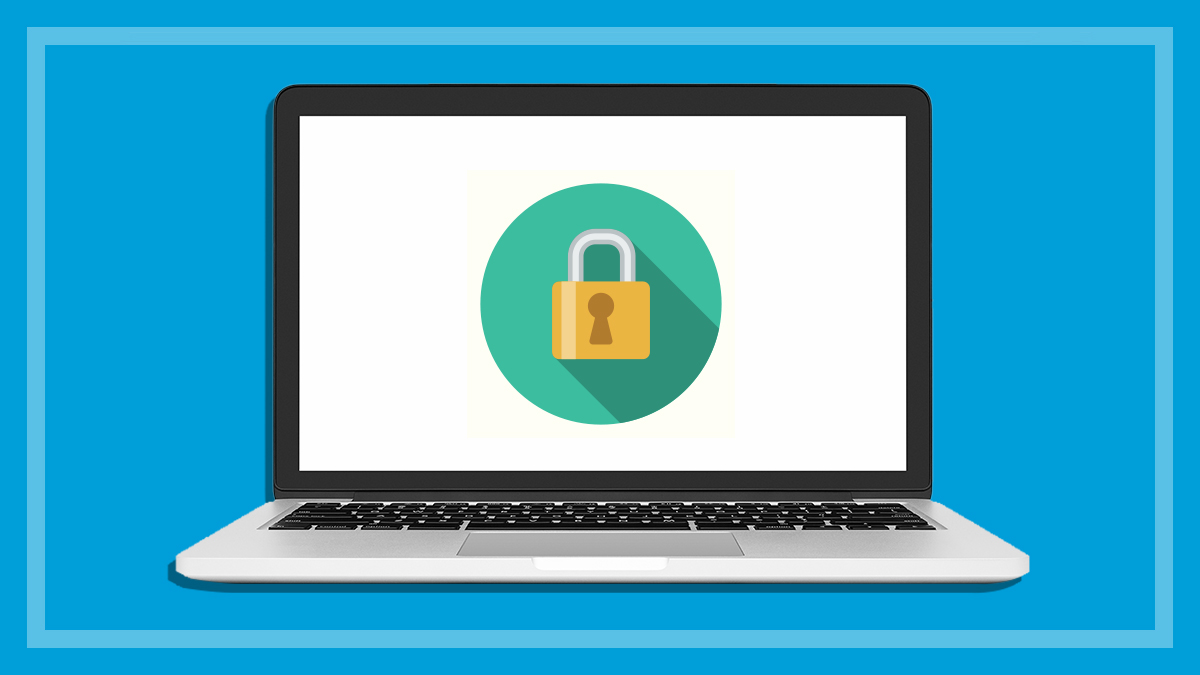Get our independent lab tests, expert reviews and honest advice.
Using international SIM cards in your Australian phone

If you’re travelling overseas and want to stay connected with family and friends or use your phone to get from A to B, you’ll need to work out whether you’ll use your Australian SIM and pay for international roaming on top of your regular phone bill, or whether it makes more sense to buy a local SIM once you get to your destination.
On this page:
- Cheaper roaming with your Australian SIM
- Using your phone in the USA
- Using your phone in the UK and Ireland
- Using your phone in Europe
- Using your phone in New Zealand
- Using your phone in Fiji
- Using your phone in Bali and Indonesia
- Using your phone in Singapore
- Using your phone in Malaysia
- Using your phone in Thailand
- Using your phone in Vietnam
- Using your phone in Japan
- Using your phone in China
There are pros and cons for each, and a lot will come down to how long you’re planning to stay, which destinations you’re visiting, and what you want to be able to use your phone for while you’re there.
Your Australian phone will work in most countries when on holidays, but you may need to check with your telco (and with your phone manufacturer if necessary) for some countries, such as the USA.
Cheaper roaming with your Australian SIM
Many Australian phone service providers offer travel packages with a set daily rate for global roaming on top of your existing account while overseas. They’re not particularly cheap – for instance, Vodafone offers a $5 per day roaming charge in addition to your regular bill, which will add up if you’re away for an extended period of time – but they’ll save you from any nasty bill surprises and can be a good option if you’re only travelling for a few days or weeks and you want to keep your existing phone number.
Be sure to look up any international roaming charges before you leave for your trip.
CHOICE tip: Switch off data roaming on your phone before you leave Australia and rely on Wi-Fi. Likewise, switch off your voicemail and ask friends and family to text you rather than calling – you’ll be charged if you answer any incoming calls.
Travel SIMs
Prepaid travel SIMs can be bought from some Australian travel stores, phone stores and post offices, or ordered online before you leave Australia. Rates won’t be as good as buying a local SIM, but they can be a smart option if you’re travelling to multiple countries and don’t want to buy a local SIM every time. Your phone will need to be unlocked to accept a SIM from another network (check with your phone service provider if you’re not sure).
Mobile data overseas
If you want internet access on the go, consider a prepaid SIM with a good amount of data, or a data-only SIM if you don’t need to make phone calls.
In lieu of Wi-Fi, laptop users can tether to their phone or tablet to get online while travelling. Compare prices for phone and data, or data only, depending on what you need.
Save a Google map onto your mobile device for offline use
- Enter the place you want a map for into the search bar.
- Click the title of the place at the bottom of the screen.
- Click menu (the three dots on the top right).
- Select ‘Download offline map’.
Using your phone in the USA
Australian mobile phones that support 4G or 5G should work on US networks, but you may need to check with your phone manufacturer to be sure.
Older Australian 2G and 3G handsets operate on a GSM standard, whereas the US 2G and 3G networks operate on GSM and CDMA. This means your coverage may be patchy as your phone will only work in areas serviced by GSM networks. Also bear in mind that the major US networks are in the process of shutting down 2G and 3G networks (with Telstra set to shut down its 3G services in Australia by 2024).
Using a local SIM in the USA
Using a US SIM is a cheaper option, but remember your phone will need to be unlocked in order to do this.
Providers like AT&T and T-Mobile offer SIM cards with short-term prepaid plans for tourists, and while not the same as prepaid with voucher top-up, they may fit the bill with a variety of options available for calls, text and data both locally and internationally.
If you can’t get a local SIM online before you leave, you may need to track down a provider’s store in the US. SIMs aren’t commonly sold at the airport like in other countries.
Disposable phones in the USA
Disposable phones can be very cheap to buy from US stores such as Walmart, K-Mart, Target or Best Buy. They come preloaded with credit and are ready to go, but will do little more than make and take phone calls.
CHOICE tip: US mobile users pay for incoming calls and texts, as well as outgoing ones.
Using Wi-Fi in the USA
Wi-Fi should be easy to find in cafes, hotels, libraries and even some parks. McDonald’s, Dunkin’ Donuts and Starbucks all offer free Wi-Fi, but you can also try searching Wi-Fi finder apps on the Apple or Google Play stores for more options.
Using your phone in the UK and Ireland
Australian mobile phones are compatible with Britain and Ireland’s GSM networks, so they’ll work by pairing up with local carriers.
Local SIMs in the UK and Ireland
Buying a local SIM is a better option if you’re planning to use your phone for more than just the odd text message. Prepaid SIMs (called ‘pay-as-you-go’) can be purchased in phone shops or at airports, or even online before you leave Australia, but just remember that your phone will need to be unlocked in order to accept a different SIM (check with your phone service provider if you’re not sure).
You won’t be charged roaming costs in the UK and the Republic of Ireland, but if you’re travelling to other European nations, you may incur roaming charges.
Internet access in the UK and Ireland
Wi-Fi should be easy to find in cafes, hotels, airports and even on some public transport. If you need a more reliable connection, consider a portable Wi-Fi dongle (for your laptop) or a prepaid data SIM (for your phone or tablet).
Using your phone in Europe
Your Australian phone will usually pick up on compatible European GSM networks. Phone coverage varies throughout Europe, but you should be able to stay connected in most places – unless you’re climbing the French Alps or camping in rural Romania, for example.
Buying a local SIM in Europe
If you’re planning to spend more than a few weeks in Europe, or if you just want cheaper rates and don’t mind having a different phone number while you’re on holidays, consider buying a local prepaid SIM once you arrive in Europe. Companies, rates and set-up will depend on which country you’re in, and you may be required to show ID to register, so the easiest way is to find an (English-speaking) phone store employee who can help you. Or better yet, most major airports will have shops or booths ready to help you get set up.
Roam Like at Home in Europe
Surcharge-free roaming is available throughout the European Union (EU) for residents of the EU. This exemption was introduced in 2017 and is referred to as ‘Roam Like at Home’.
Although the exemption technically only applies to EU citizens, if an Australian tourist is using a SIM that was bought in an EU country, it’s likely that local operators aren’t going to distinguish between residents and travellers. But before you rely on this free EU-wide roaming, check with the provider.
Wi-Fi in Europe
Free Wi-Fi is plentiful in some areas of Europe and unheard of in others. Sometimes you’ll be expected to pay, and in rural areas it often simply won’t be available. Generally in the cities you’ll find free Wi-Fi in all hotels and most franchises such as Starbucks and McDonald’s.
CHOICE tip: Wi-Fi is pronounced “wee-fee” or “vee-fee” in much of non English-speaking Europe. In Germany it’s called W-LAN (pronounced “vay-lahn”).
Mobile data in Europe
If you really want to stay connected, consider buying a local phone SIM with generous data, or a data-only SIM.
If you’re travelling with a laptop, you could consider a USB Wi-Fi dongle, or you could tether your laptop to your mobile phone’s data.
The best place to find what you need is at the airport when you first arrive in Europe. Phone and tech shops at airports will have the best options for travellers who don’t want to sign up to a long-term plan.
Using your phone in New Zealand
Everyone knows New Zealand is not another state of Australia, but many Aussies forget when it comes to using their phones. Plenty of visitors have been stuck with enormous global roaming charges after using their phones the way they normally would at home.
Local SIMs in New Zealand
If you’re planning to spend more than a few weeks in New Zealand, or if you just want cheaper rates and don’t mind having a different phone number while you’re on holidays, a local prepaid SIM is easy enough to buy and set up, as long as your handset is unlocked.
New Zealand’s main phone operators are Spark, Vodafone and 2degrees, and there are discount operators as well:
- Skinny Mobile (via Spark network)
- Compass (via Spark network)
- Slingshot (via Spark network)
- Warehouse Mobile (via 2degrees network).
Can you use your Vodafone phone in New Zealand?
Vodafone Australia customers shouldn’t expect local rates in New Zealand just because Vodafone also operates there. The networks aren’t connected so you’ll still cop global roaming fees.
CHOICE tip: Skinny Mobile has been named a ‘Consumer Trusted’ business by CHOICE’s sister organisation consumer.org.nz.
Wi-Fi in New Zealand
Free Wi-Fi isn’t as common in New Zealand as it is in Australia, but it can be found in some cafes, hotels, libraries and in franchises like McDonald’s and Starbucks. You’ll also find free hotspots in the city centres of Auckland, Rotorua, Wellington and Dunedin. In rural and remote areas, internet access is harder to come by.
CHOICE tip: The mobile phone company Spark provides free Wi-Fi hotspots for its customers in various locations throughout the country.
Using your phone in Fiji
Australian phones that operate on a 900Mhz frequency will work on Fiji’s GSM network, but coverage is likely to be patchy in remote areas and on outlying islands. The Mamanuca Islands, however, have quite extensive coverage thanks to Steven Spielberg, who paid for mobile towers to be installed while he was there filming the movie Cast Away.
Local SIMs in Fiji
A prepaid Fijian SIM is a cheaper option if you’re planning to use your phone often. You’ll find phone shops at the airports and in the towns and you can buy a SIM preloaded with credit. Credit can be topped up online or bought at phone shops and convenience stores.
Vodafone and Digicel are on the GSM network, so they’ll be compatible with Australian phones.
CHOICE tip: The Vodafone store at Nadi Airport sells SIM card starter packs which they’ll set up and register for you.
Can you use your Vodafone phone in Fiji?
Vodafone is one of the major telcos in Fiji, but you’ll still pay international rates if you use your Australian Vodafone SIM there. Likewise, phones locked to the Vodafone Australia network won’t accept Vodafone SIMs in Fiji.
Wi-Fi in Fiji
Most hotels offer internet access, either free or paid, and with varying degrees of speed and signal strength. Internet cafes and Wi-Fi hotspots can be found in the major cities and some towns, but the further off the beaten track you go, the harder it will be to find.
Using your phone in Bali and Indonesia
Australian mobile phones should work in cities and towns using Indonesia’s GSM networks.
Local SIMs in Bali and Indonesia
Local SIMs are a much cheaper option if you can’t live without a phone and you don’t mind having a different number while you’re overseas. Indonesia’s main GSM carriers are Telkomsel (Simpati), Indosat and XL.
You can buy a SIM preloaded with credit from a convenience store or kiosk – look for the word ‘pulsa’ (credit) on shop signs. Set-up is simple and doesn’t require ID or creating an account – simply pop the SIM into your phone and you’re good to go as long as your phone is unlocked. To top up your credit, look for that pulsa sign again, pay the vendor and give them your mobile number – they’ll send the credit to your phone.
Wi-Fi in Bali and Indonesia
An internet connection is fairly easy to find in tourist areas. Many coffee shops and hotels in Bali and Jakarta offer free Wi-Fi, although connection speeds may be slow. In rural areas, however, you’ll be lucky to get a phone signal, let alone access to the internet.
Using your phone in Singapore
Singapore has great mobile phone coverage and your Australian mobile phone should work well on the country’s extensive GSM network.
Local SIMs in Singapore
The country has three main telcos: Singtel, M1 and StarHub, all of which operate on the GSM network and will be compatible with your Australian handset as long as it’s unlocked. Using a prepaid Singaporean SIM card will save you money on calls and data, and you can buy one from Singaporean phone stores, post offices or convenience stores.
At Singapore Changi Airport you can purchase prepaid SIM cards from the Changi Recommends counters in all four of the arrival halls or from one of the local telco’s own stores located within the airport, as well as from the currency exchange counters. You’ll need to register your SIM using your passport as ID. You can then top up your credit online, through an ATM, or with vouchers from convenience or phone stores.
Wi-Fi in Singapore
You’ll find free Wi-Fi almost everywhere in Singapore through the Wireless@SG program run by the government and the country’s three telcos. It’s easiest to access it using a Singaporean phone number. You’ll need to log in via the Wireless@SG App that you can download via your phone’s app store. Almost all hotels offer free or paid Wi-Fi, and some cafes, restaurants and shopping malls also serve as Wi-Fi hotspots.
Caution
- Always ask permission before connecting to a network. Under Singaporean law, helping yourself to Wi-Fi is considered computer hacking.
- The Singaporean government restricts access to some online content, including pornographic and media pirating sites.
Using your phone in Malaysia
Malaysia operates on a GSM network, so Australian mobile phones should work anywhere there’s a signal. Rural areas and islands won’t always get great coverage, but the cities will.
Local SIMs in Malaysia
A prepaid Malaysian SIM card is a much cheaper option than paying global roaming rates on your Australian SIM, provided your handset is unlocked. The main telcos are Maxis, DiGi, Celcom, and U Mobile – all websites are in English, so you can compare prepaid deals for calls and data. There are phone stores at Kuala Lumpur Airport, or you can buy your SIM from a convenience store or online before you leave. Ask the person who sells you the SIM to help you set it up. You may need to show your passport as ID.
Wi-Fi in Malaysia
You’ll find free Wi-Fi hotspots in many hotels, cafes and shopping malls. If you need to do more than just check your emails every now and then, consider buying a local data SIM or renting a USB modem or portable ‘pocket hotspot’. Internet connections may be sketchy or non-existent in remote areas.
Using your phone in Thailand
Australian mobile phones will work by connecting with local GSM networks in Thailand.
Local Thai SIMs
You can save money by using a Thai SIM card rather than your Australian account. The three main Thai telcos are AIS, dtac and Truemove.
SIMs and phone credit can be bought at Thai airports, convenience stores and phone shops.
The major airports have booths selling SIMs aimed at tourists – these are preloaded with phone and data credit for set periods of a few days or weeks. You’ll need to show your passport as ID and the assistant will likely set your phone up for you.
Internet access in Thailand
Wi-Fi is available in most hotels and some cafes and bars, particularly in tourist areas. Speeds may be slow and you may have to pay. Popular tourist islands like Koh Phi Phi and Koh Samui have plentiful Wi-Fi, but if you’re going to somewhere more remote you may have trouble getting online.
Mobile data is cheap in Thailand. To stay online (almost) all the time, just grab a prepaid SIM card for your phone or tablet.
Using your phone in Vietnam
You should be able to get phone coverage in most areas of Vietnam using your Australian mobile phone, with the exception of remote and mountainous areas.
Local SIMs in Vietnam
Using a Vietnamese prepaid SIM card will get you local phone and data rates while you’re in the country, and it’s easy to set up as long as your phone is unlocked. Technically, all Vietnamese SIMs should be registered using a passport or ID, but you can buy pre-registered SIMs almost anywhere. Look for the sign ‘Bán SIM – Thẻ’ (‘Selling SIM card – mobile’) at kiosks, phone shops and at the airport, choose what kind of SIM you need – look at the amount of credit, the type of credit (phone calls/data) and the expiry date, and ask the shopkeeper to set it up on your phone for you. If you need more credit, buy a recharge card from any shop with the ‘Bán SIM’ sign.
MobiFone, Vinaphone and Viettel are the three main GSM phone companies in Vietnam, and they should all be compatible with Australian handsets.
Wi-Fi in Vietnam
Plenty of cafes and hotels offer free Wi-Fi in the cities and tourist areas. Hotspots include KFC, Lotteria, Jollibee, Pizza Hut and Gloria Jean’s, as well as local businesses. Wi-Fi will usually be locked, but if you’re a customer just ask staff for the password. Internet speeds and service can be patchy in some places, and at times the entire country experiences dropouts (which can happen when sharks chew on the undersea cable providing internet to Vietnam!).
CHOICE tip: The Vietnamese government monitors online activity and restricts access to pornographic and political content as well as to social media sites, including Facebook. If you have trouble accessing social media sites, you can try changing your DNS server. We don’t recommend you try to scale the firewall to access any more serious censored sites, though.
Using your phone in Japan
You should be able to use your Australian phone in Japan, although coverage might be patchy if you’re in remote areas, like skiing the mountains. You should also bear in mind phone etiquette in Japan: it’s best not to use or answer the phone in public places like trains and restaurants.
Local SIMs in Japan
It can be difficult to get a phone/voice SIM in Japan but there are no restrictions on buying prepaid data SIMs, so they’re a good workaround if you mainly just need access to the internet and you don’t mind making phone calls through VoIP apps (like Facebook Messenger, Skype, Whatsapp, Signal and more). You can buy prepaid SIMs at all the major airports.
Wi-Fi in Japan
Internet speeds are excellent in Japan (although not as good as some other Asian countries such as South Korea), but access doesn’t always come free.
Your hotel should be able to give you Wi-Fi access (possibly at a price) and many hotels still offer free wired in-room internet, which can be handy if you have a laptop (BYO Ethernet cable).
Free public Wi-Fi isn’t as common as it might be in other countries, but it’s more prolific than it used to be. It can be found in airports, train stations, tourist information centres and certain convenience stores and coffee shops.
Japan Connected and Travel Japan Wi-Fi apps can also help you track down free Wi-Fi.
If staying connected is very important to you, consider a USB modem or a portable Wi-Fi device. The best place to find one of these gadgets is on arrival at the airport. You can book online in advance and pick it up at the airport, or even have it delivered to your hotel if you’re arriving at a time when the airport store is closed.
Using your phone in China
Your Australian phone should get good coverage in most populated areas thanks to China’s extensive network.
Local SIMs in China
A prepaid Chinese SIM card is a much cheaper option than paying global roaming rates on your Australian SIM.
There are three major telcos in China:
- China Telecom – but their SIMs don’t work with Australian phones as it uses the CDMA standard.
- China Mobile – has the widest coverage.
- China Unicom – the coverage is almost as good, and is reportedly compatible with most foreign phones.
You can buy SIM cards at Chinese airports, phone stores, or convenience stores. Ask the person selling you the SIM to help you set it up, as phone prompts may not be in English. Technically you should show your passport as ID, but they might not ask for it. Avoid buying SIM cards on the street as you may have trouble setting them up on your own or they may even be expired or invalid.
How to buy phone credit
You can top up your credit via the telco’s website (although they may not play well with some foreign credit cards), using vouchers from convenience or phone stores, or via WeChat or Alipay (again, these reportedly don’t play well with foreign cards).
Make sure you have plenty of credit. Not only can it be difficult to top up, but if you run out you may be blocked from receiving calls and your text messages could be deleted if they aren’t saved on your phone. Credit is relatively cheap so you may as well stock up with more than you need.
Most Chinese telcos will SMS you advertisements, most of which are in Chinese and are easily deleted. You may also get the occasional one-ring call from an unknown number. Don’t ring back – you’ll be charged an extremely high call rate.
Global roaming rates in Taiwan and Hong Kong
Your mainland Chinese SIM will charge global roaming rates if you use it in Taiwan or Hong Kong.
In the past, Chinese SIMs were regional and would charge roaming rates even if you travelled between provinces, but since 2017 charges have been brought into line – at least for mainland China.
China Mobile Hong Kong has prepaid SIMs which will work in both China and Hong Kong. The rates will be higher than a Chinese mainland SIM, but their website and phone service is in English.
Wi-Fi in China
You’ll find free Wi-Fi in most hotels and many western-style cafes across China, and always at Starbucks. In rural areas internet access may be harder to come by. Some Wi-Fi hotspots might ask for a Chinese phone number in order to register and activate.
Can you access Facebook and Gmail in China?
The Chinese government blocks or limits access to a huge array of online content, including pornography and political information, and some major sites such as Google (including Gmail), Wikipedia, Twitter and Facebook.
WeChat is the country’s main social media network, and since it does a lot more than just social media – news, money transfers, hailing taxis, restaurant bookings, takeaway orders and much more – it’s well worth downloading it to use while you’re there.
Just be aware that messages sent via WeChat (and other messaging platforms including text messages) may be monitored by the Chinese government. Don’t worry: you’d have to say something very inflammatory to attract their attention.
VPNs in China
Many people use virtual proxy servers (VPNs) to circumnavigate the ‘Great Firewall of China’. The Chinese government technically banned these in 2018, ordering internet service providers to block them, but plenty are still in use.
Most VPNs can’t be downloaded while in China so if you’re planning to use one, download it before you go. And do your research to make sure it will work once you’re there.
Are VPNs illegal in China?
Technically, yes. Plenty of westerners use them without falling foul of the law (the Chinese government is far more concerned about what its own citizens are doing), but if the thought of breaking the law makes you nervous, you’ll just have to live without your Gmail, Facebook and Twitter while in China.






